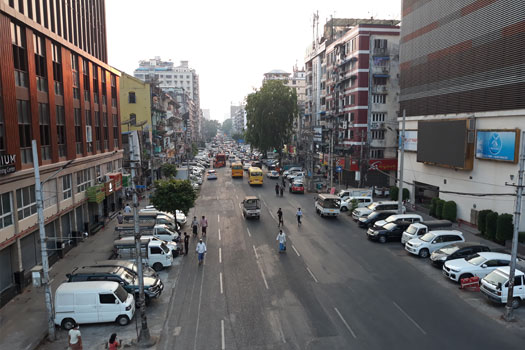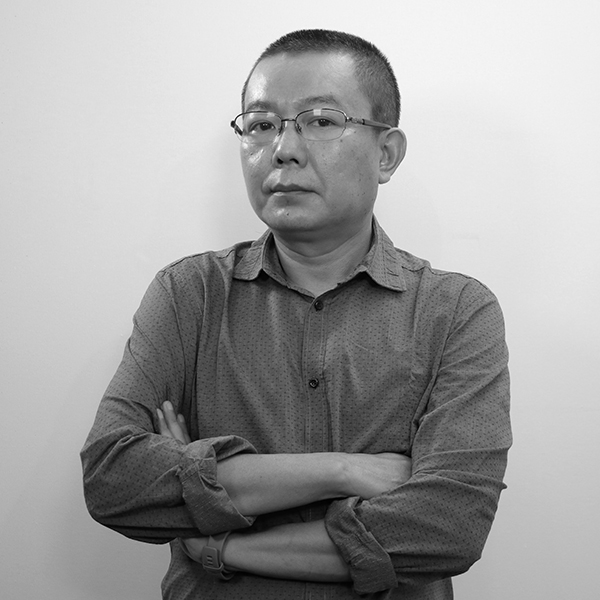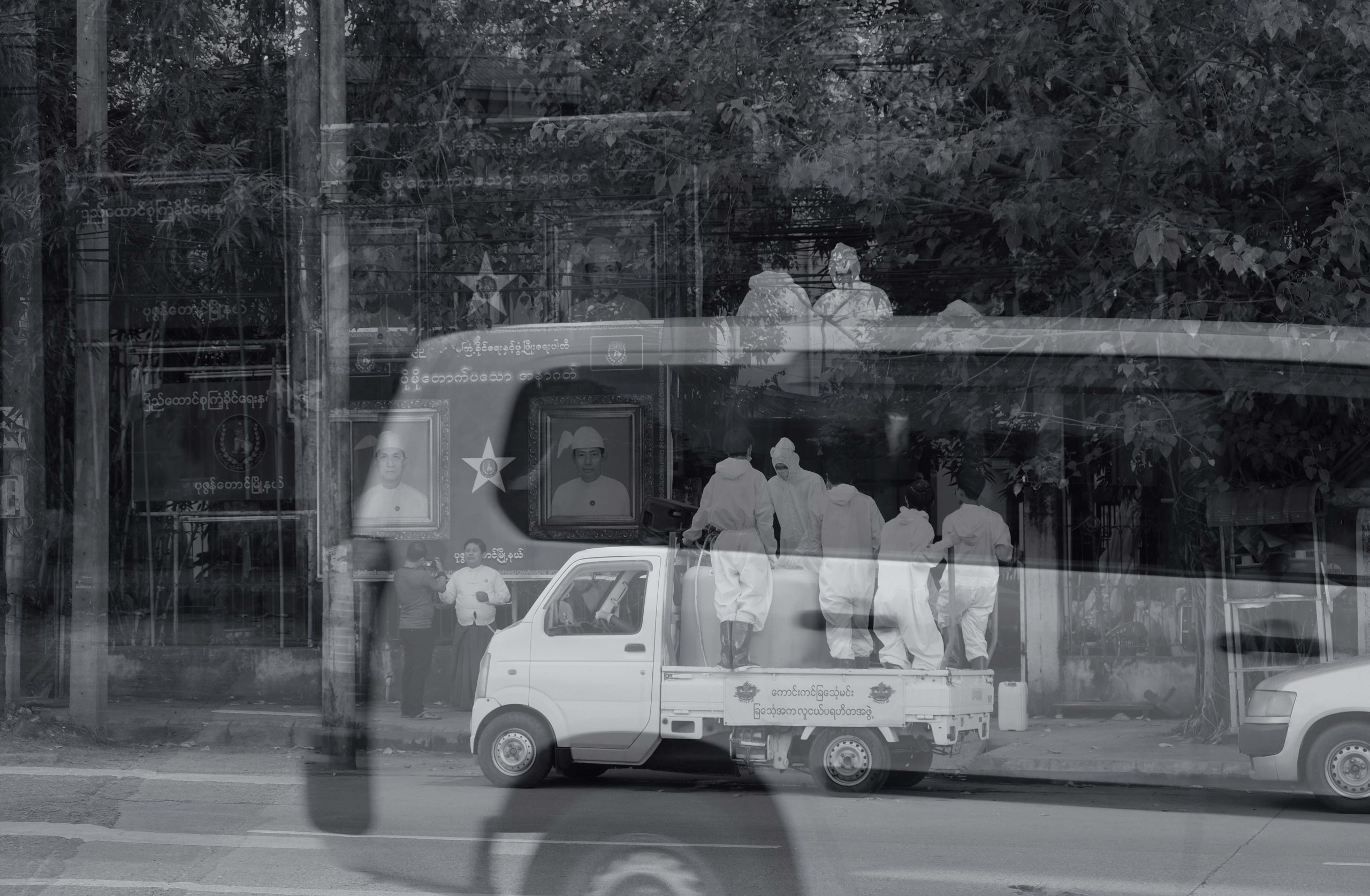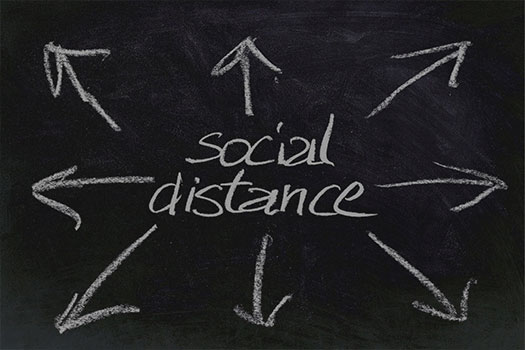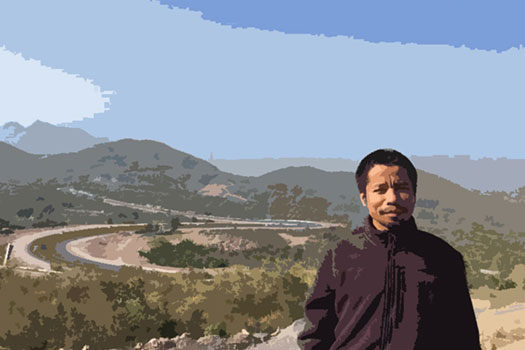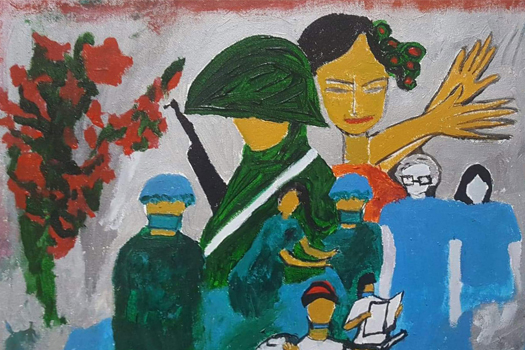Monday, 20 April, 2020, Yangon came out of a ten-day stay-at-home order that just happened to coincide with the Thingyan (Buddhist New Year) holiday. Businesses would largely be closed and people stayed at home in any case.
We had expected the order to be continued as it has been in neighboring countries, but instead, the government announced a curfew. For most of the country, this is from 10pm-4am: hardly a burden. Local townships can make their own rules, and more stringent ones have been put in place where there have been “outbreaks.” From what we can see, an “outbreak” means that when a case or two appears, an entire building or sometimes an area larger than that is put on some kind of lockdown (that is placed under quarantine). A few weeks ago, a church in Insein held services despite government prohibitions and at least twenty people contracted the disease. Groups larger than five people are not allowed, and only one person per household is allowed out at a time. The effectiveness of some aspects of the curfew are not clear. For example, working in factories and people working in companies are permitted. I had thought that factories were closed well over a month ago.
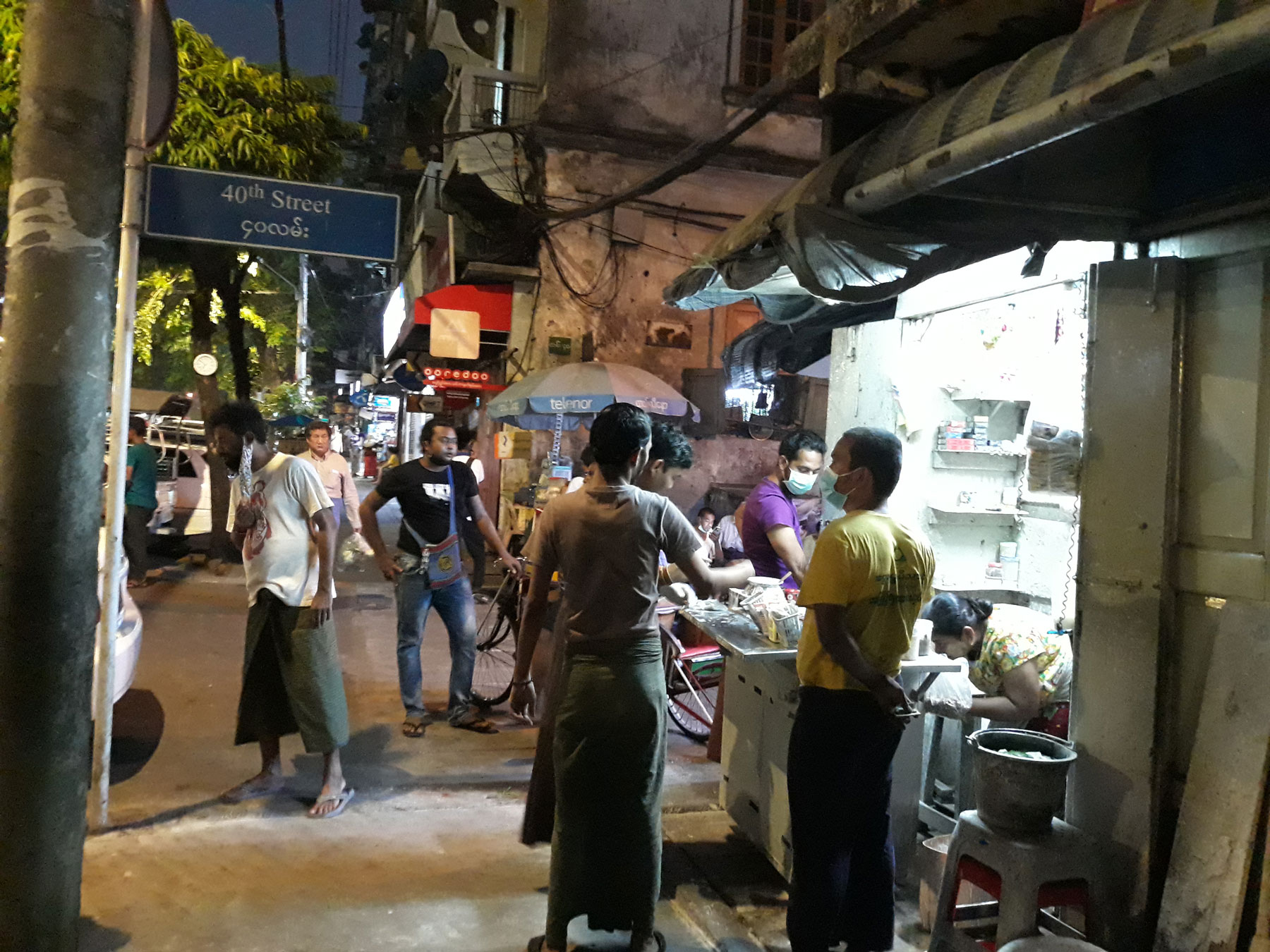
A Betel Selling Shop
I ventured out a few times during the stay-at-home order. The first day I went out to go to the market down the street. Police had set up a checkpoint at the nearest crossroads, but I found many of them sitting at an informal teashop. The next day they were gone. Several days later, I had the opportunity to run some errands with a friend in their car. We had to drive from downtown to about Six Mile to help bring food to people under quarantine. Some markets were open, and people were selling all the normal goods: fruits, vegetables, meat, flowers. Prices were the same. Burma is a food sufficient country after all, even if there are certain places where access to food is uneven.
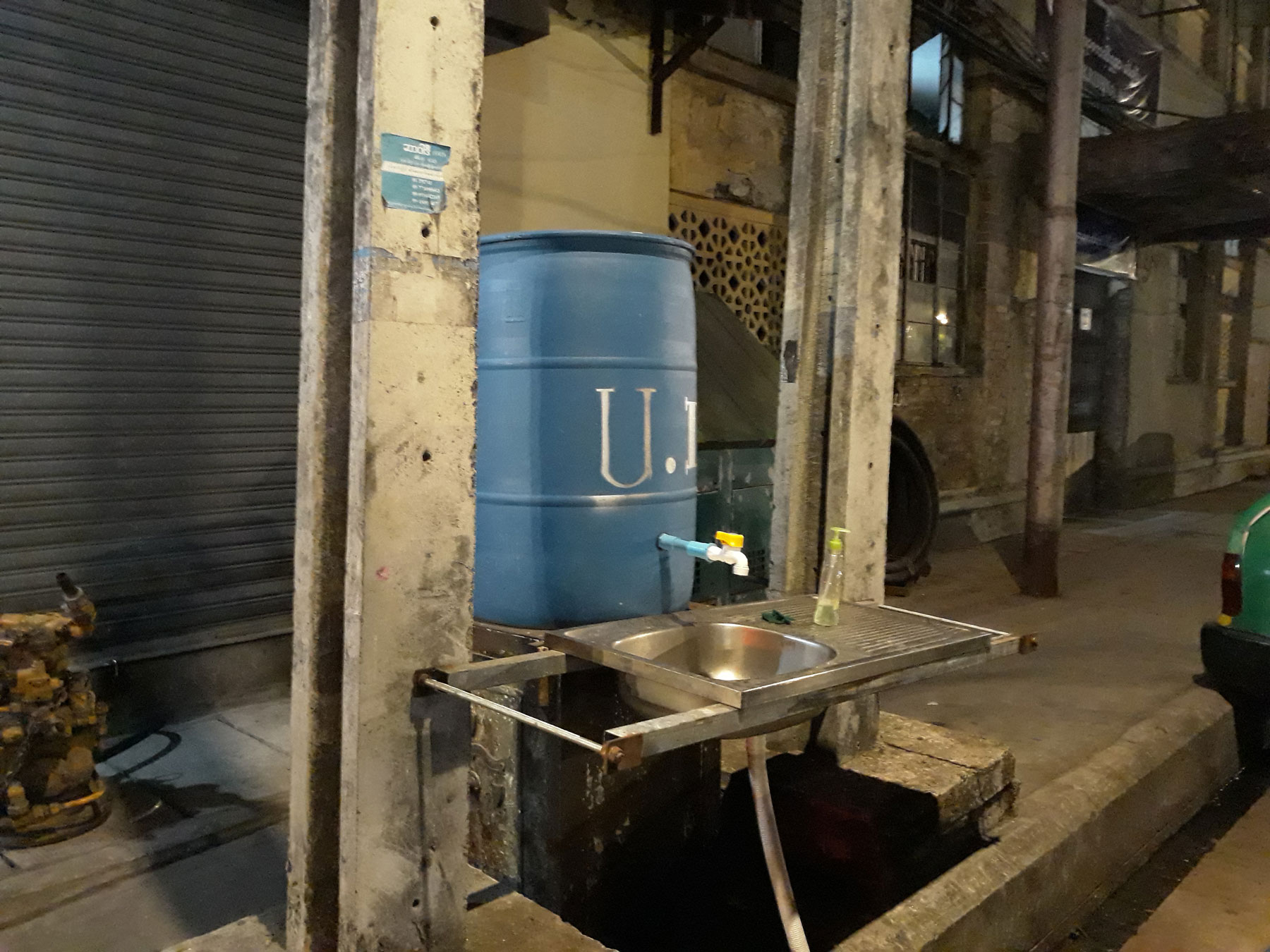
A Handwashing Station in Downtown Rangoon
In many neighborhoods, residents had set up barricades to keep outsiders out. Downtown, many had sprinkled lime around these blockades. I recall that people have often done that during epidemics, such as of cholera, on the idea that the slaked lime is purifying.
From what I understand, other cities have had different arrangements. Mandalay, for example, had a stay-at-home order imposed before Yangon. In much of the countryside, life is the same.
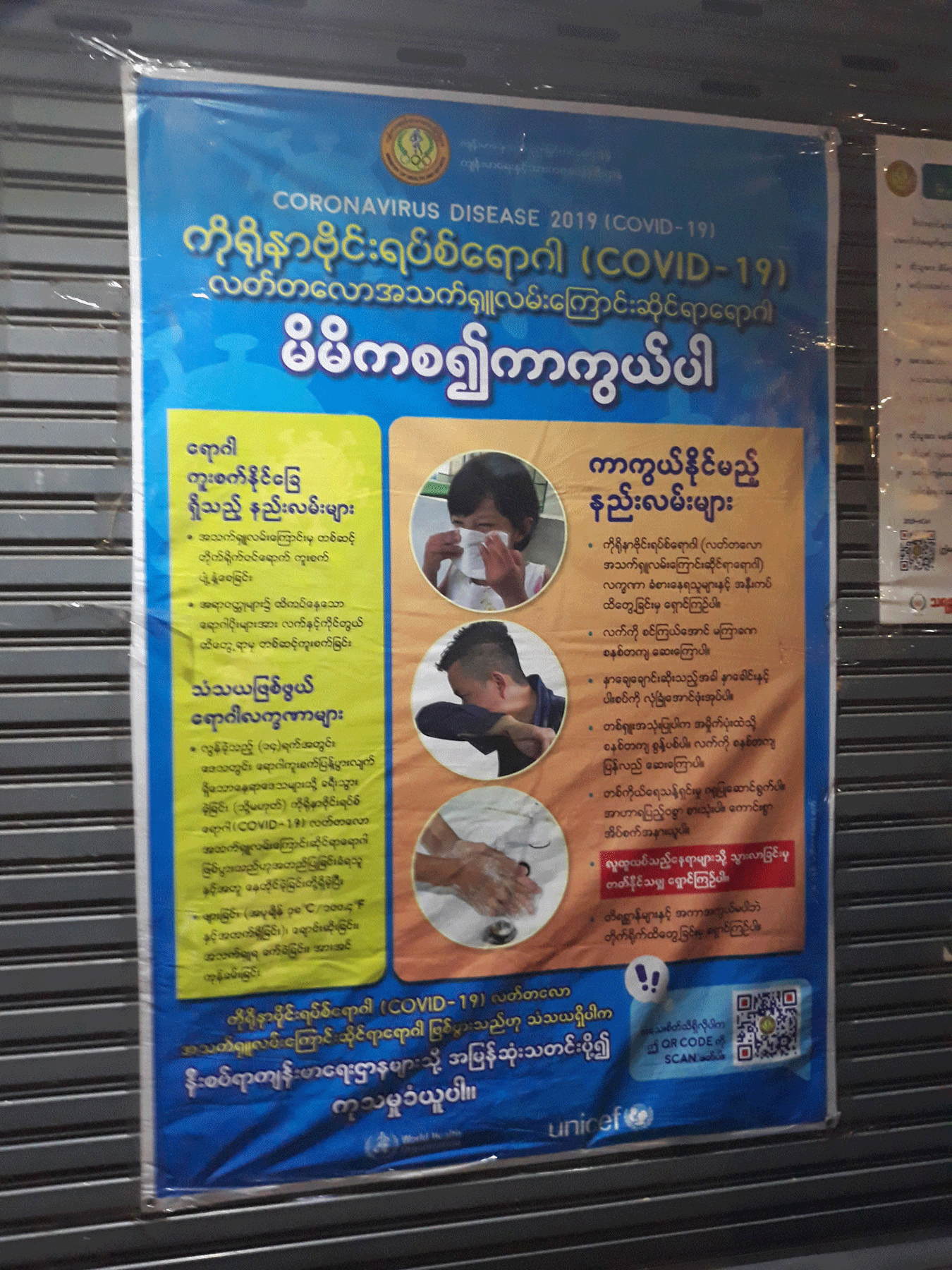
A Health Poster
The stay-at-home order was the endpoint on a long road. At the first news of the outbreak in January, some people looked askance at Chinese, who are a huge immigrant population in the country, not to mention large numbers of businesspeople in Yangon. The government was not particularly quick to restrict flights in from China or border crossings. In early February, I spent a week in Chiang Mai on CSEAS business. We had to fill out a fairly substantial form on arrival back in Yangon detailing travel plans and what to do if we became ill. During most of this time, however, people kept saying how there were no cases in the country, how the virus doesn’t seem to like heat and dirt, and so there was not much sense of urgency.
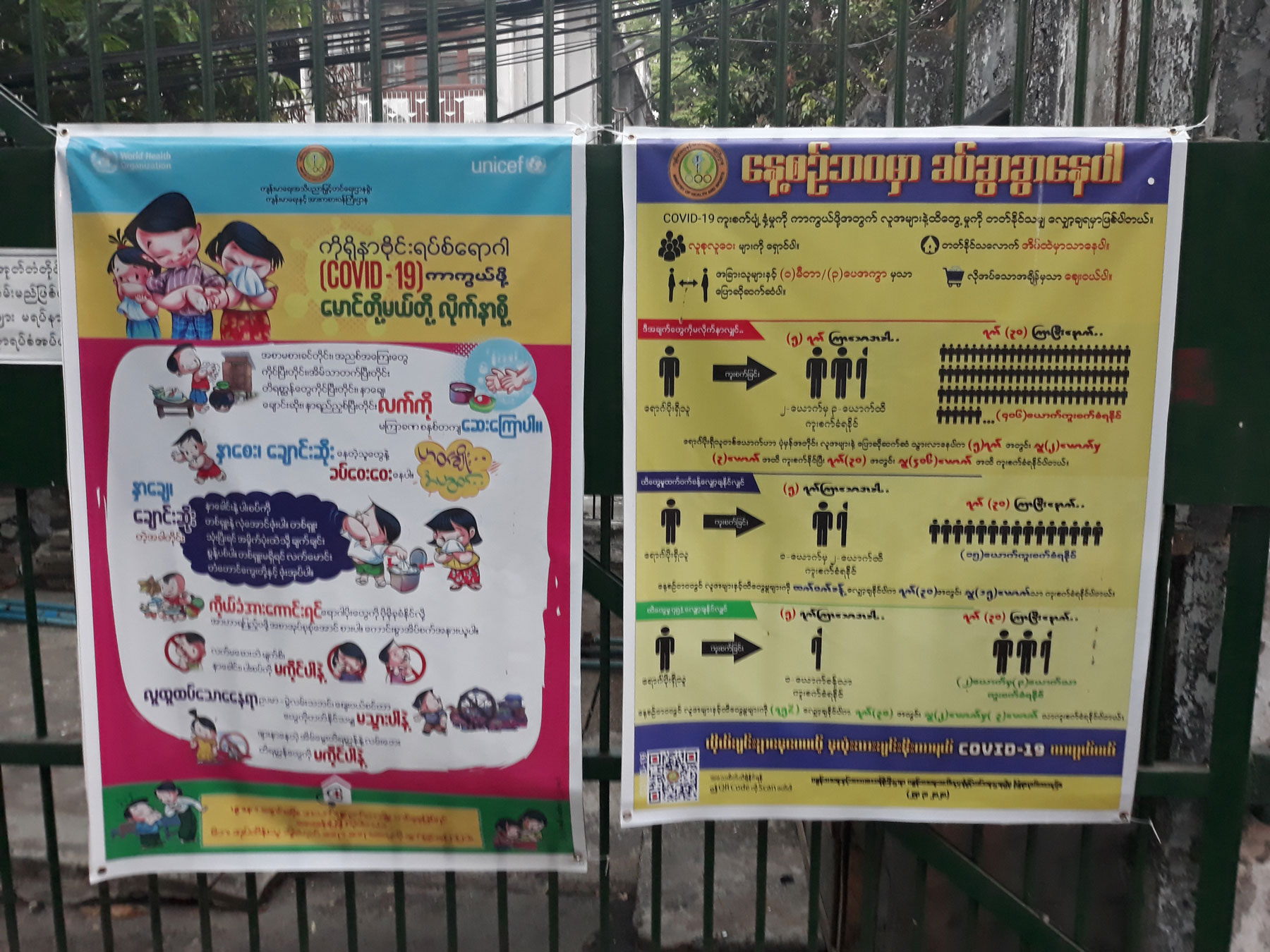
Some Health Posters in Downtown Rangoon
That all changed in March. It was not until the situation became dire in the U.S. and the WHO declared an emergency that the government here became concerned. I watched as other expats began to panic, not helped by the messages some European embassies were putting out (the contents were not always very flattering to the Burmese, either). Flights became more restricted. Bangkok is the closest hub, but Thailand imposed entry restrictions that made it basically impossible to enter. In a little over a week, a very large number of expats left. A few of the stragglers took emergency repatriation flights arranged by their countries. The airport remains officially closed, and anyone entering the country has to undergo 28 days of quarantine, the last seven at home. Land borders are supposedly closed, although I keep reading reports of increases in trade with China. “Land border” closures are, in any case, dubious since these refer only to official, central-government controlled border crossing along a vast land border. There have been reports of territory under the control of non-state armed actors letting in Chinese workers and the like.

A hotel with a message stating “if you don’t see anyone call to inquire”
During March, I still travelled around downtown. More and more venues took our temperatures before letting us in. I have had little faith in their thermometers, since my reading often indicated that I had hypothermia. I maintained my regular routine for as long as I could, until my gym closed. More and more businesses started closing on their own, including many restaurants and cafés. Those that stayed open could only serve take out. Burmese teashops and beer halls were slowest in following that rule.
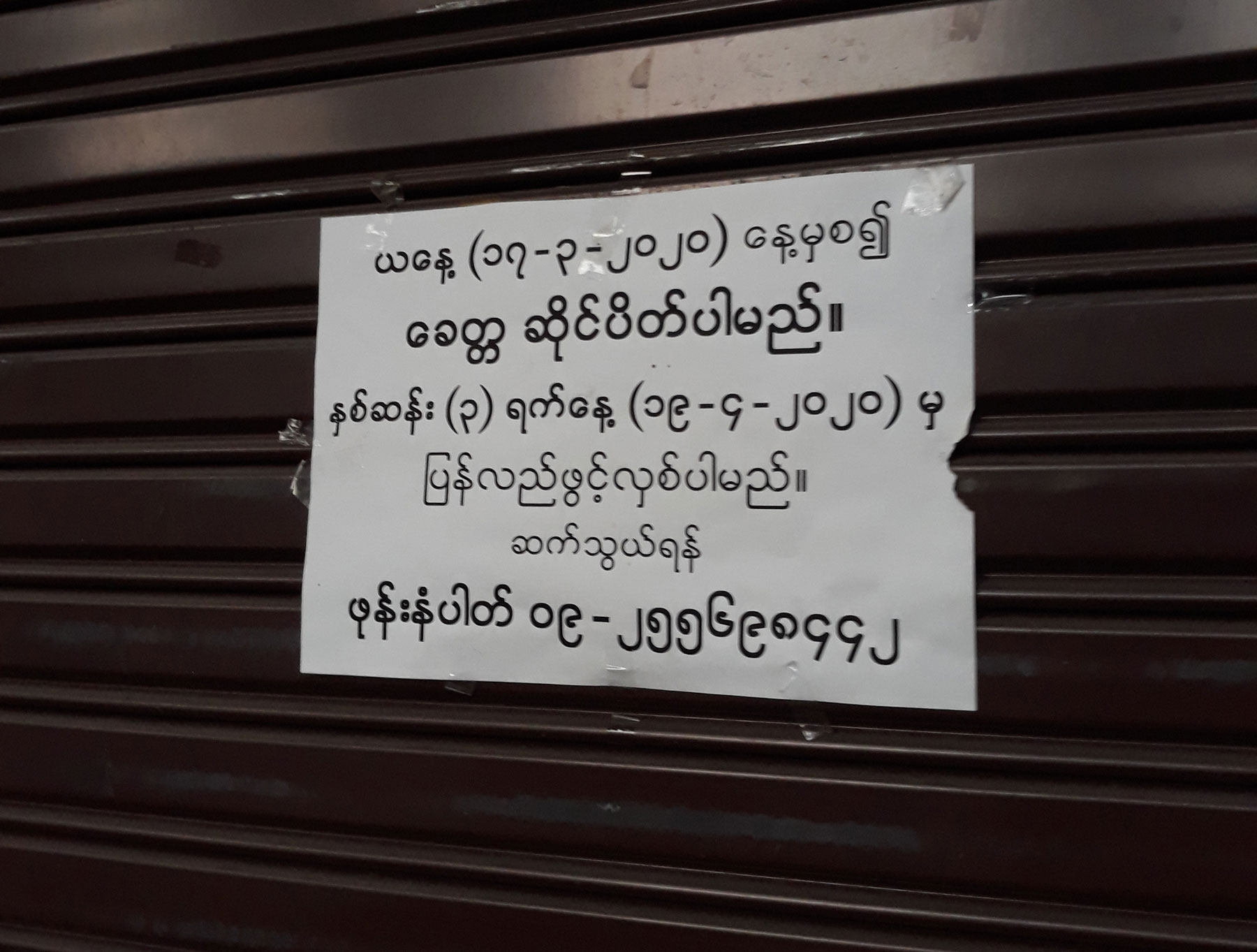
A local store under temporary closure
I still went downtown frequently, at first taking taxis, then walking. Streets became noticeable emptier. Most hotels and all movie theaters were closed and cordoned off. Yet some parts of downtown seemed fairly normal. Billboards have been put up urging people to wash their hands and providing other information. Basins have been set up along the streets for people to wash their hands. Local businesses have begun to make their own hand sanitizer, and masks are for sale.
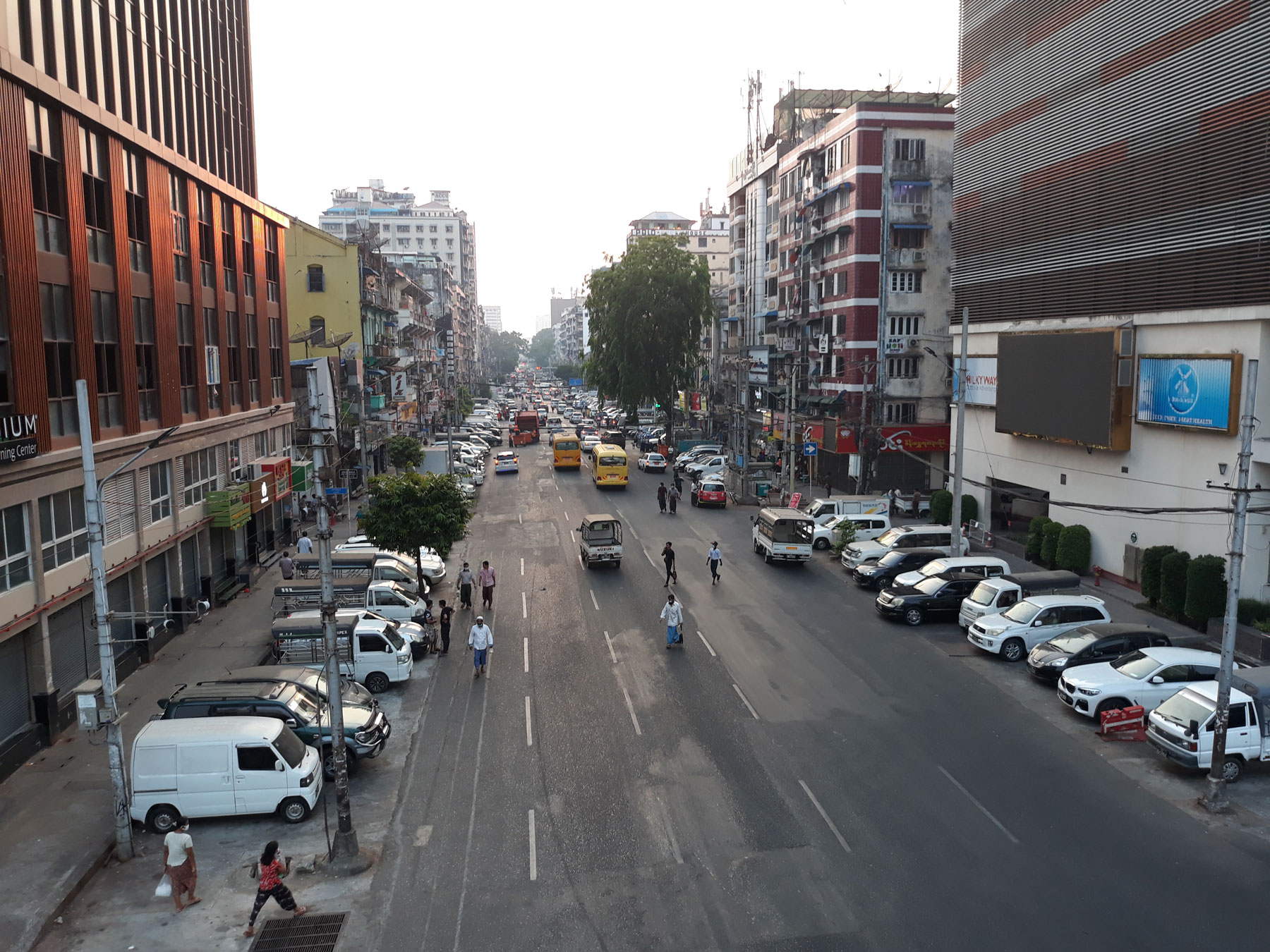
The Sule and Anawyahta Roads (normally busy)
Much confusion and misinformation has been circulating. I am not on social media, so I cannot comment on it in detail. From what I understand, there is a lot of confusion about, for example, the difference between putting someone in quarantine, and then the question of how long a person is infectious if they develop the disease. Many people seem unsure of what “exposure” is. Questions of the possibility of reinfection may or may not have led the government to extend protective quarantine to twenty-one days. Cultural and racialist exceptionalism has also appeared – a government official has spoken of how COVID-19 will not spread widely in the country because the Burmese do not shake hands or hug, and because of their diet.
The matter of the first reported cases is intriguing. From the start, the government has tested people entering the country through airports, not overland. The first reported cases were of Burmese returning from the U.S. and the U.K., two countries Burma has had an uneasy relationship with. Furthermore, these early cases were Christians, a religious minority practiced largely by ethnic minorities. None were associated with China, which is after all the largest trading partner and investor in the country, not to mention the huge immigrant presence of Chinese.
On Tuesday, 21 April, I went on another long walk downtown. Most businesses are still shut. The large informal market on Anawyahta Street was closed. The hordes of Yangon City Development Committee workers and officials who descended upon the market were not wearing masks, and were not keeping apart from each other. I saw people all over the city wearing masks, but often pulled down to their chins. No one seemed to be avoiding groups of five or more.
It is not clear what will happen over the next few weeks and months. Large numbers of workers have been forced back from Thailand, during the process of which they were forced into close contact. Returning to their villages in Shan State, Karen State, Mon State and other border areas, it is not clear what kind of quarantine measures or tracking was put in place, not to mention the fact that large numbers of unemployed people will be back in areas that they left precisely because their economic prospects were not good.
22 April, 2020
Patrick McCormick is a historian and linguist who has been living and working in Yangon, Burma for fourteen years. He has worked as the country representative for the École française d’Extrême-Orient, and was part of a four-year research project on language contact in and around Burma through the Department of Comparative Linguistics at the University of Zürich. He has also worked as a consultant for local and international NGO’s related to social monitoring, immigration, and mother-tongue education. He has published on the ethics of doing research in Burma, language contact between the Mon and Burmese languages, language planning and language policy, and on research related to Burmese and Mon history.
Citation
Patrick McCormick. 2020. “Witness to the Pandemic in Yangon.” CSEAS NEWSLETTER, 78: TBC.

